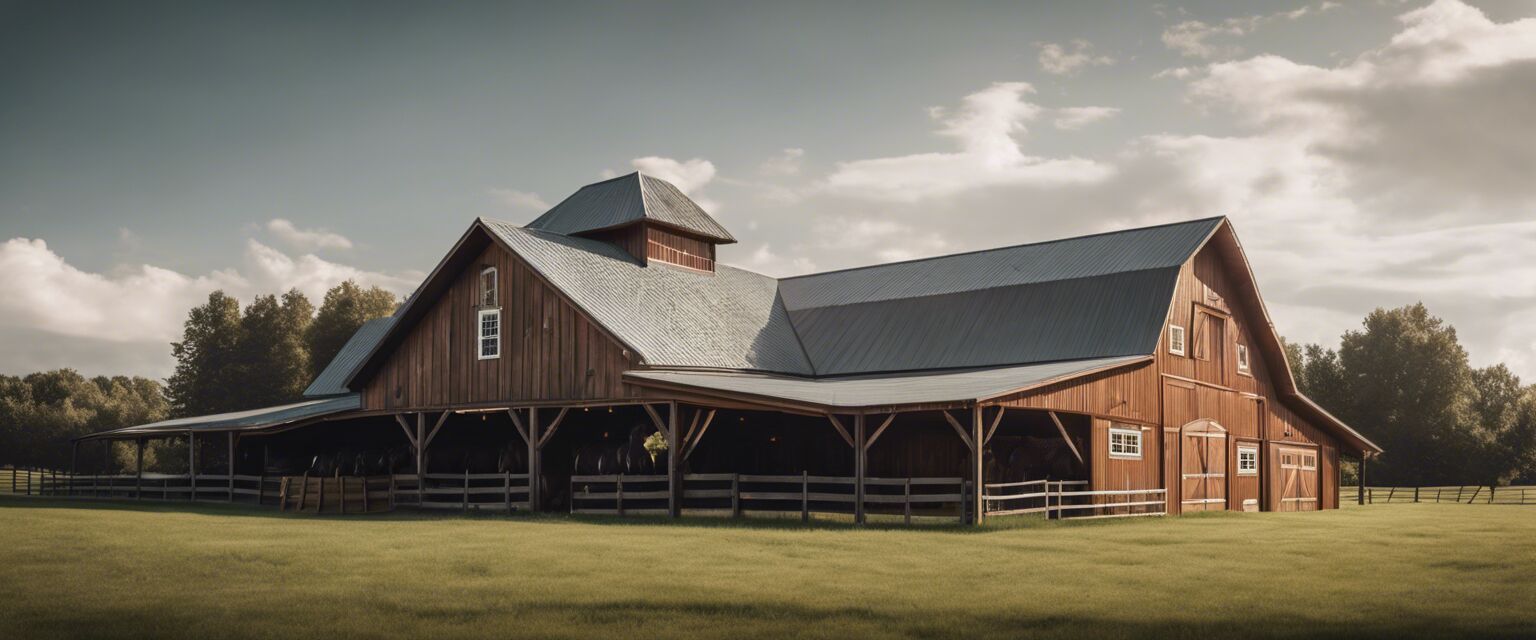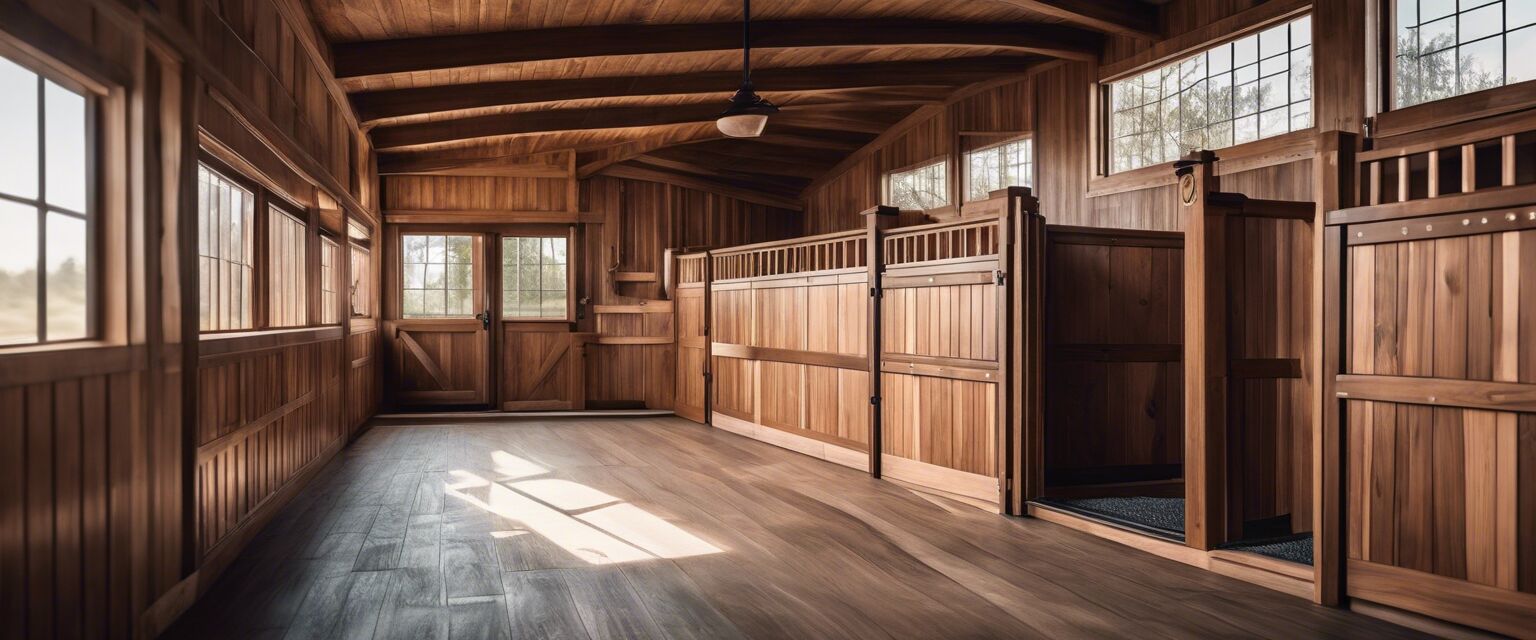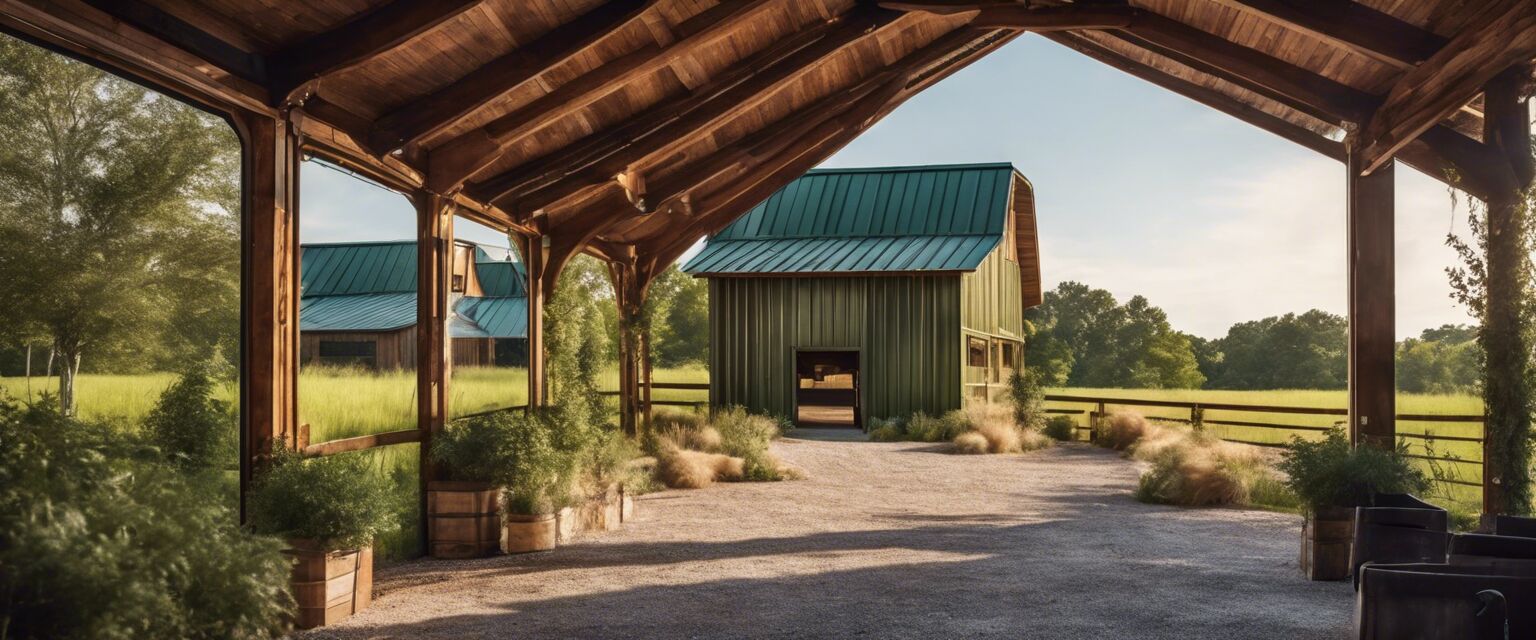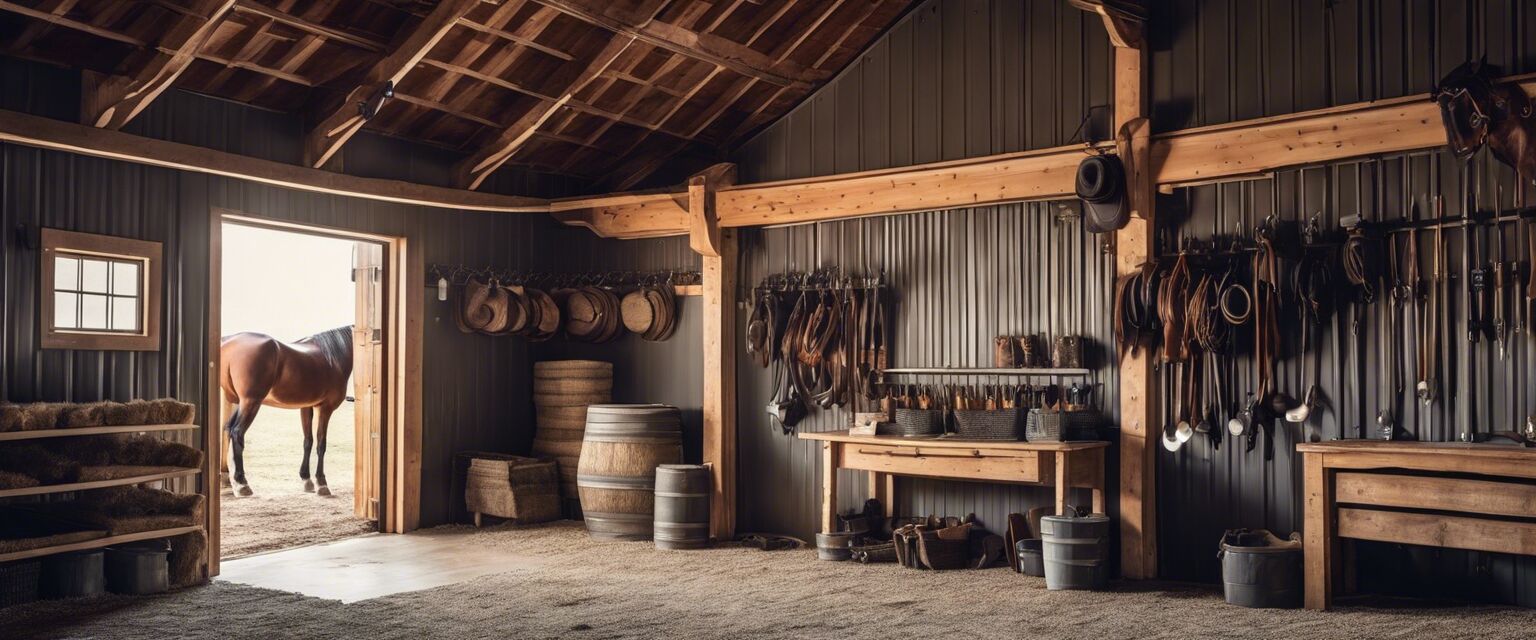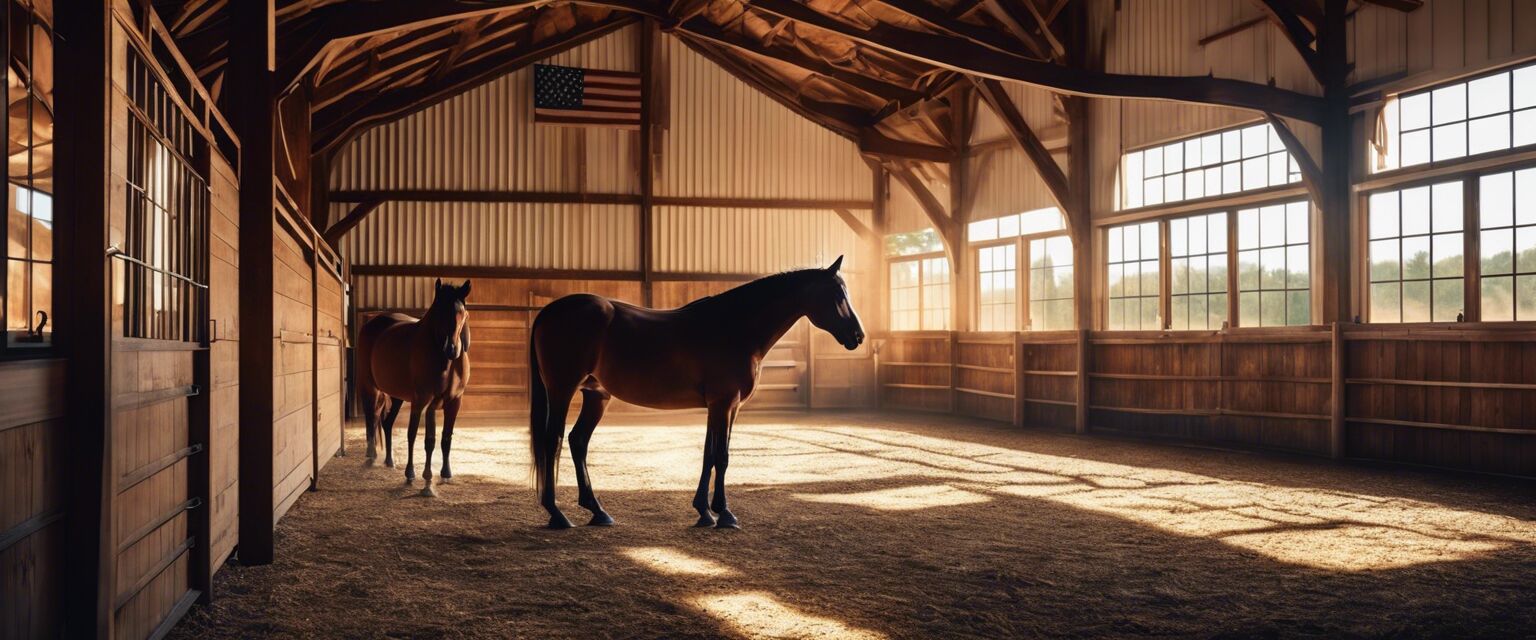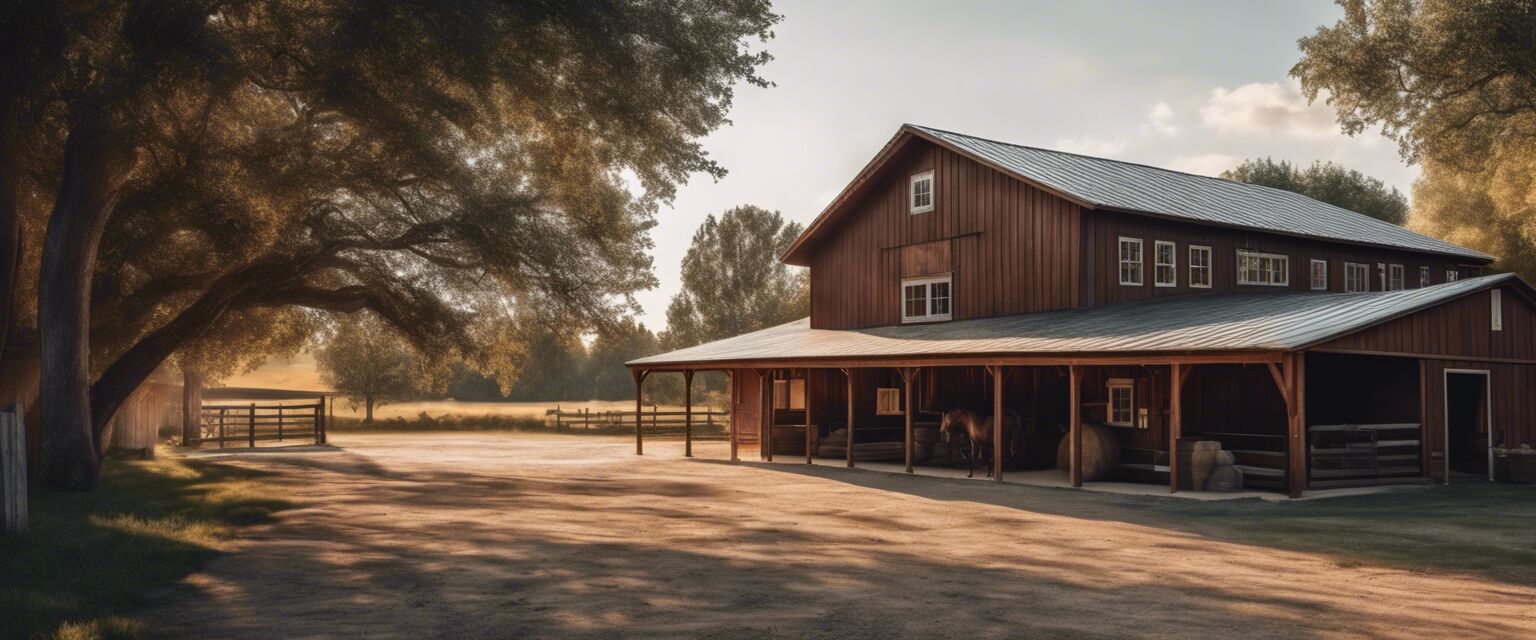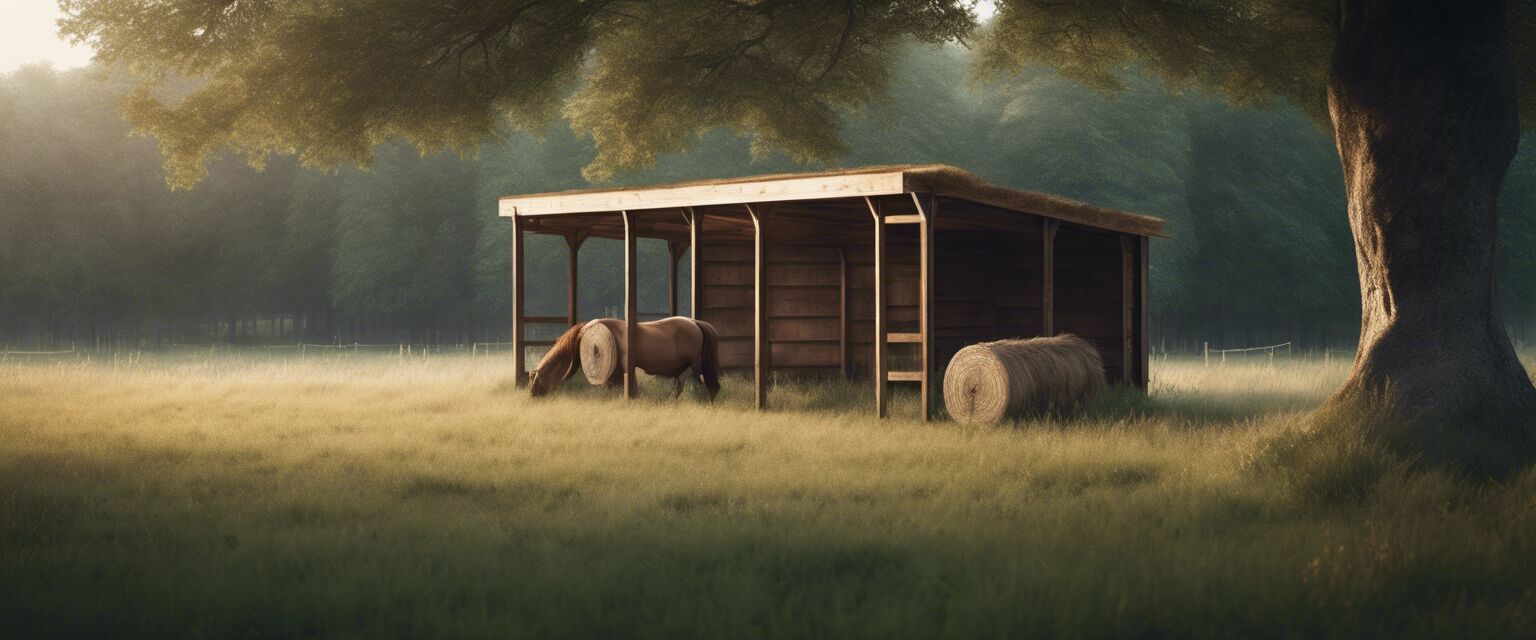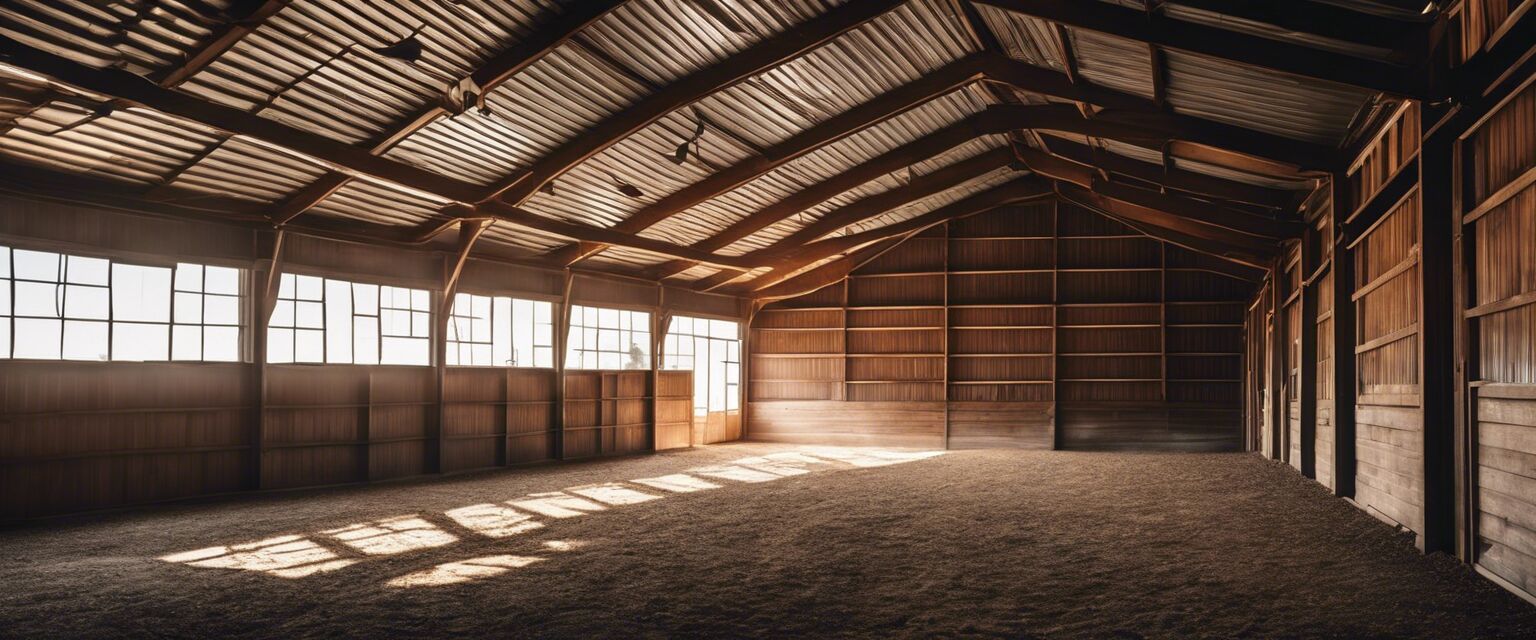
Insulation and ventilation
Key Takeaways
- Proper insulation helps maintain a consistent temperature in horse barns.
- Ventilation is essential for ensuring fresh air circulation and minimizing moisture buildup.
- Combining both strategies effectively will lead to healthier living conditions for your horses.
- Consider local climate factors when deciding on insulation and ventilation solutions.
When building a DIY horse barn, ensuring adequate insulation and ventilation is crucial for maintaining a safe and comfortable environment for your horses. This article outlines the best practices for insulating and ventilating your horse barn, providing you with actionable tips and techniques.
Understanding insulation
Insulation is a barrier that slows the transfer of heat. In horse barns, it helps maintain a stable temperature, protecting horses from extreme weather conditions. Here are some common insulation materials:
| Insulation Material | Type | Benefits |
|---|---|---|
| Fiberglass | Batts / Rolls | Cost-effective, good thermal performance |
| Foam Board | Sheets | High R-value, moisture resistant |
| Spray Foam | Liquid | Best air sealing, effective at corners and seams |
| Cellulose | Blown-in | Eco-friendly, good thermal performance |
Insulation installation tips
- Make sure to seal gaps and cracks to prevent air leaks.
- Use moisture barriers to prevent mold and mildew.
- Choose insulation that is appropriate for your local climate.
- Ensure adequate thickness for optimal temperature control.
Importance of ventilation
Proper ventilation in a horse barn allows fresh air to circulate and helps to remove humidity and harmful gases. Here are the main benefits:
- Prevents respiratory issues in horses.
- Reduces the risk of mold and bacteria growth.
- Helps in managing odors.
Types of ventilation systems
There are two main types of ventilation systems to implement:
- Natural Ventilation: Relies on wind and thermal buoyancy; this is the most cost-effective option.
- Mechanical Ventilation: Involves fans and mechanical systems to ensure proper airflow; this option can be more effective but is also more costly.
Best practices for ventilating your horse barn
Keep in mind the following tips when setting up your ventilation system:
- Position windows at high points for optimal air exchange.
- Use vents that can be adjusted depending on weather conditions.
- Ensure air is flowing throughout the barn, not just in certain areas.

Combining insulation and ventilation
The ultimate goal is to find a balance between effective insulation and proper ventilation. Hereâs how:
- Insulate walls and ceilings to maintain desired temperatures.
- Install vents or windows that can open to allow airflow without sacrificing insulation.
- Monitor humidity levels to keep the air quality in check.
Creating a comfortable barn environment
A well-insulated and well-ventilated barn not only protects your horses but also contributes to their overall comfort and well-being. Hereâs a summary of best practices:
| Feature | Insulation | Ventilation |
|---|---|---|
| Cost | Moderate | Low to High |
| Installation Difficulty | Moderate | Varies |
| Maintenance | Low | Moderate |
| Benefit to Horses | Temperature Control | Air Quality |

FAQs about insulation and ventilation
What is the best insulation material for horse barns?
There is no definitive answer as the best insulation material depends on your geographic location and budget. Fiberglass and foam board are commonly used due to their effectiveness and reliability.
How often should I check my ventilation system?
It is a good idea to check your ventilation system at least twice a year, focusing on maintenance before the summer and winter seasons.
Can I have too much ventilation?
Yes, excess ventilation can lead to drafts and temperature fluctuations. It's important to find a balance that allows for fresh air but maintains comfortable conditions.
Final thoughts
Creating a comfortable and safe environment for your horses is essential. By focusing on effective insulation and ventilation strategies, you can ensure that your horse barn remains conducive to their health and well-being.
Tips for beginners
- Start with a comprehensive plan before committing to materials.
- Consider local weather patterns when choosing insulation and ventilation options.
- Donât hesitate to ask for expert opinions or local building codes compliance.
Pros
- Improved temperature control for horses.
- Enhanced air quality reduces health risks.
- Increase in overall comfort for both horses and owners.
Cons
- Initial installation costs can be high depending on materials.
- Requires regular maintenance and checks.
- Improper setup can lead to issues such as drafts.
